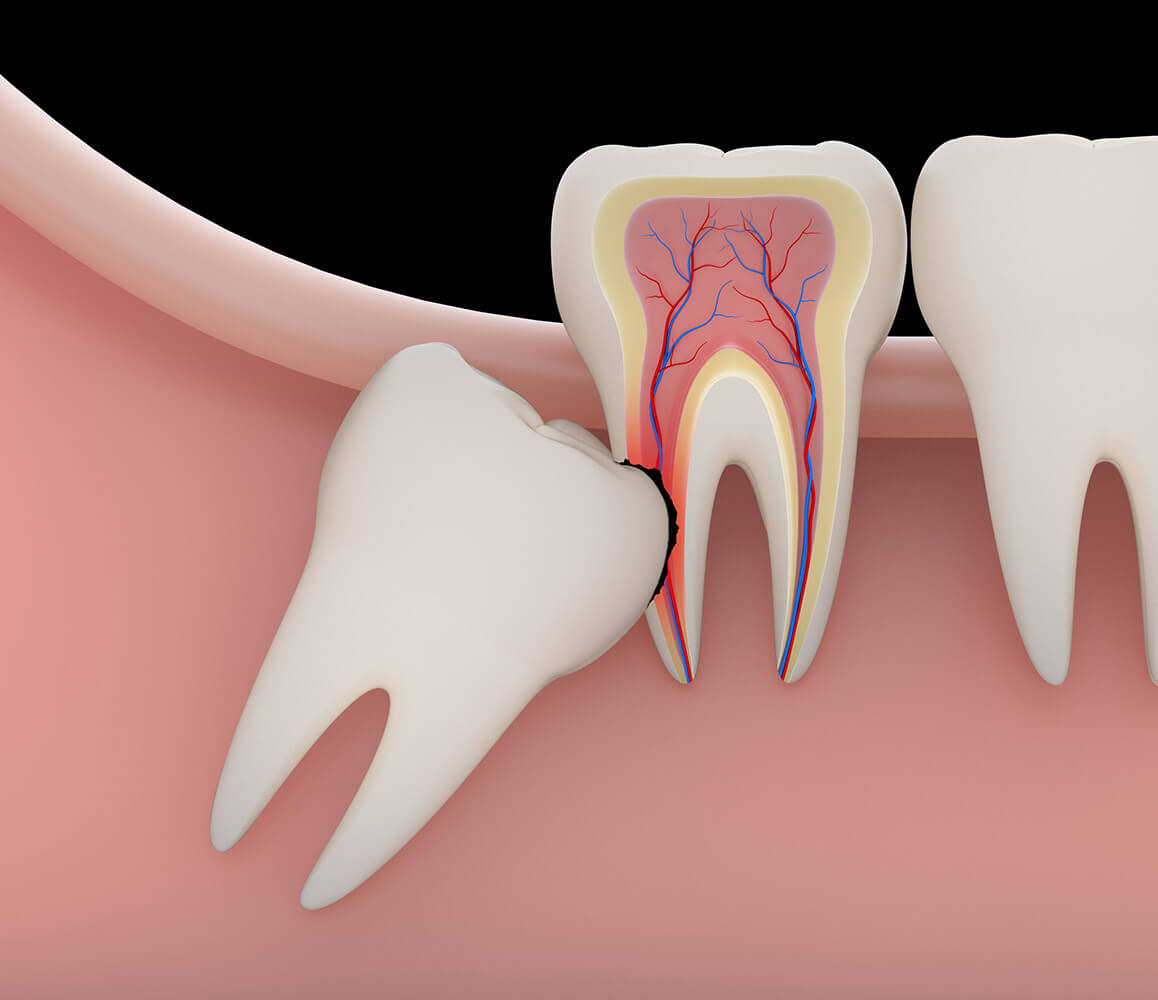Wisdom Tooth aka. Impacted Third Molars are the teeths which do not fully erupt into mouth which results in painful conditions that require their immediate removal.Wisdom teeth likely become impacted because of a mismatch between the size of the teeth and the size of the jaw. Impacted wisdom teeth are classified by their direction of impaction, their depth compared to the biting surface of adjacent teeth and the amount of the tooth's crown that extends through gum tissue or bone. Impacted wisdom teeth can also be classified by the presence or absence of symptoms and disease. Screening for the presence of wisdom teeth often begins in late adolescence when a partially developed tooth may become impacted. Screening commonly includes clinical examination as well as x-rays such as panoramic radiographs.
Wisdom teeth symptoms include pain, redness, tenderness and/or swelling around the site. As wisdom teeth begin to erupt through the surface of the gums, this allows bacteria to enter through open tissue, which can result in infection. Oral infections have been shown to affect your overall health as well.

Process
Wisdom tooth extraction is done at our centre with the help of two sedation techniques:
- Local anesthesia.
- General anesthesia.
After the sedation is give we immediately follow other proces:
- Make an incision in the gum tissue to expose the tooth and bone.
- Remove bone that blocks access to the tooth root.
- Divide the tooth into sections if it's easier to remove in pieces.
- Remove the tooth.
- Clean the site of the removed tooth of any debris from the tooth or bone.
- Stitche the wound closed to promote healing.
- Place gauze over the extraction site to control bleeding.